By: XEONIQ [ Instagram | Tumblr ]
Guangzhou, the Southern Chinese port city that the English called Canton, is a 2,200 year old tropical sprawl home to thousands of factories and over 13 million people. Amidst vibrant multi-story textile markets, enormous 21st century super-malls and towering glass high-rise residential complexes, unregulated hives of underclass humanity thrive in alleyways and warrens. This set was shot using the in-built camera sensor of a mobile phone; presented chronologically with narration as I went deep into and through one of Guangzhou’s many slums, which exist in defiance to the ever-encroaching threat of urban modernisation that closes in around them.
The sun had melted behind cement building blocks, but the heat and humidity raged on unabated. Off a main road a small pop-up, tent-top market beckoned pedestrians in offering inexpensive baubles and polyester replicas of foreign luxury goods. Old men and women sat in fold-out chairs, residing over their poorly presented wares without seeming to notice nor care of the meager inflow of shoppers and commuters that strolled by their stores. The makeshift stalls thinned out while a stream of walkers proceeded onward towards the entrance of an alley some 100 metres past that opened between a slew of dilapidated industrial buildings.
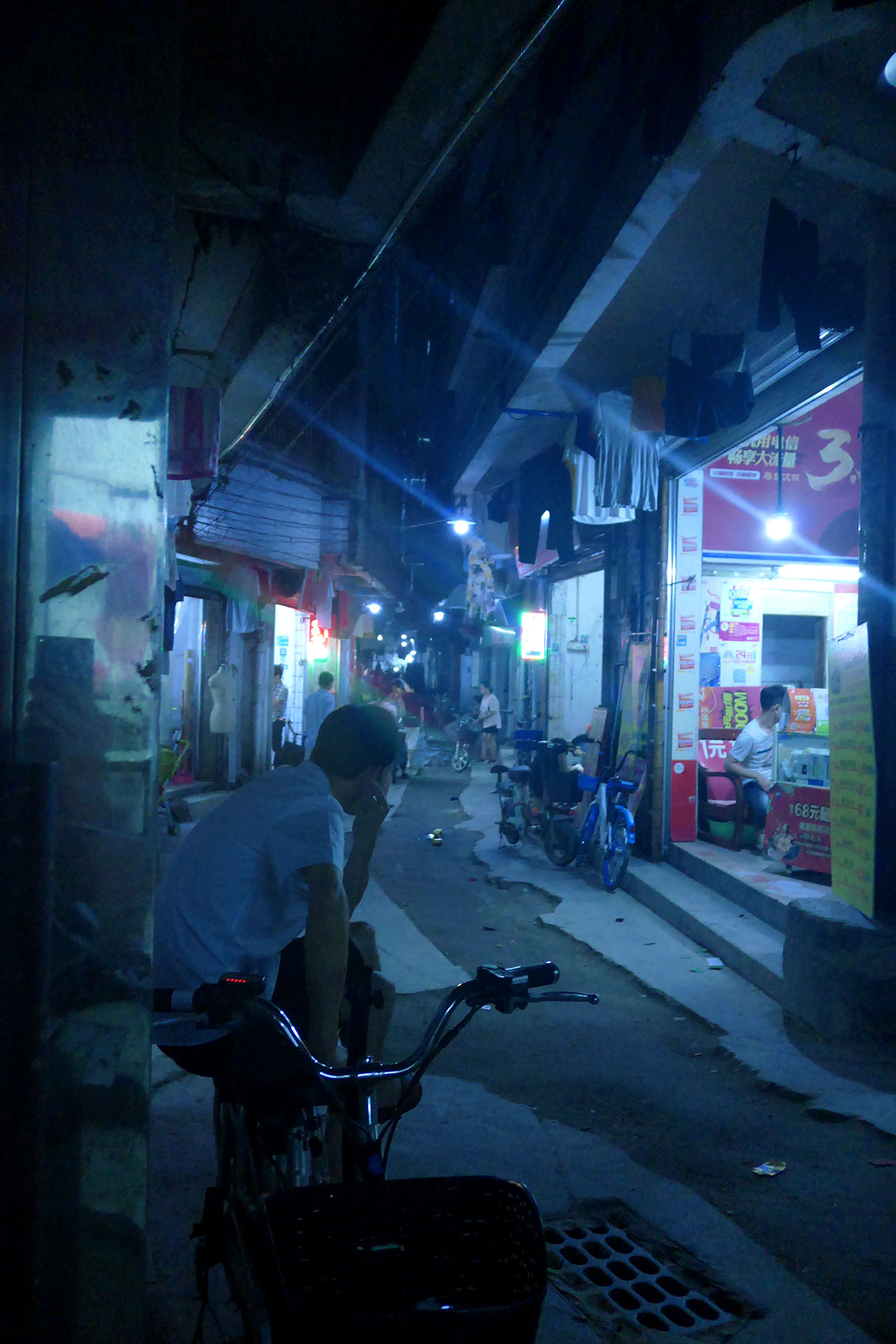
Entering inside, an amalgamation of retail businesses had set up within small shopfronts on either side of the alley providing small electronics, clothing and various services. The further I ventured in the more run down and barebones these operations became. Lighting was non-existent except for that provided by the shops themselves. Pedestrians continued to surge forward and the sound of scooters blaring their horns came from in front and behind as couriers pushed in and out against the flow of traffic. It became clear that this area was more than a low-rent retail zone and I pressed on further, following the general direction of the crowd.


Larger entrance ways materialised in the darkness, pouring light into the tepid night air. Nocturnal workshops hummed with the mechanical whir of sewing machines and I was afforded a view into what must be one of the city’s lower cost production centres. Here in this warren, hundreds of men and women cut shapes from mountains of textiles, drafted patterns and sewed garments that were bundled away on electric scooters.
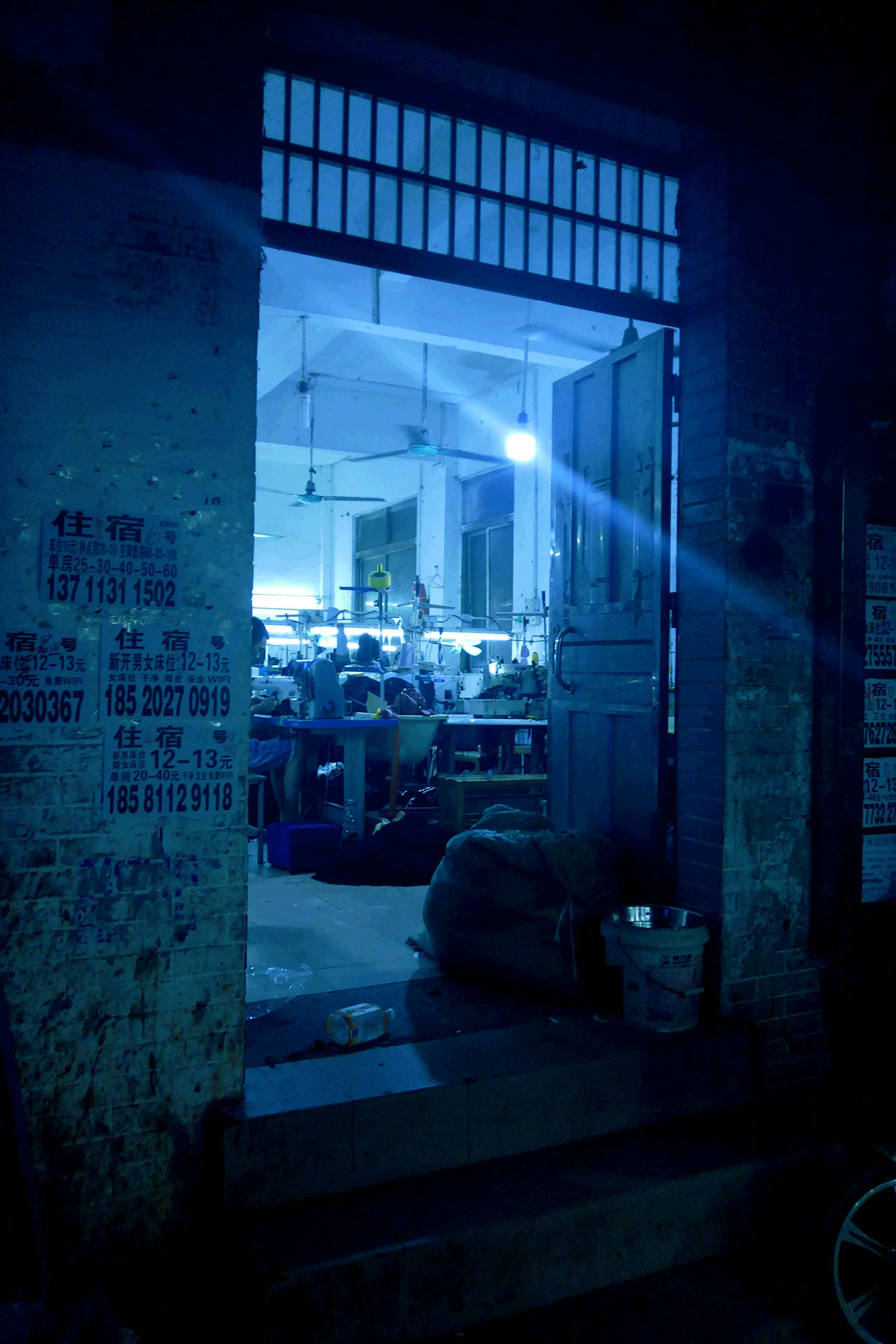
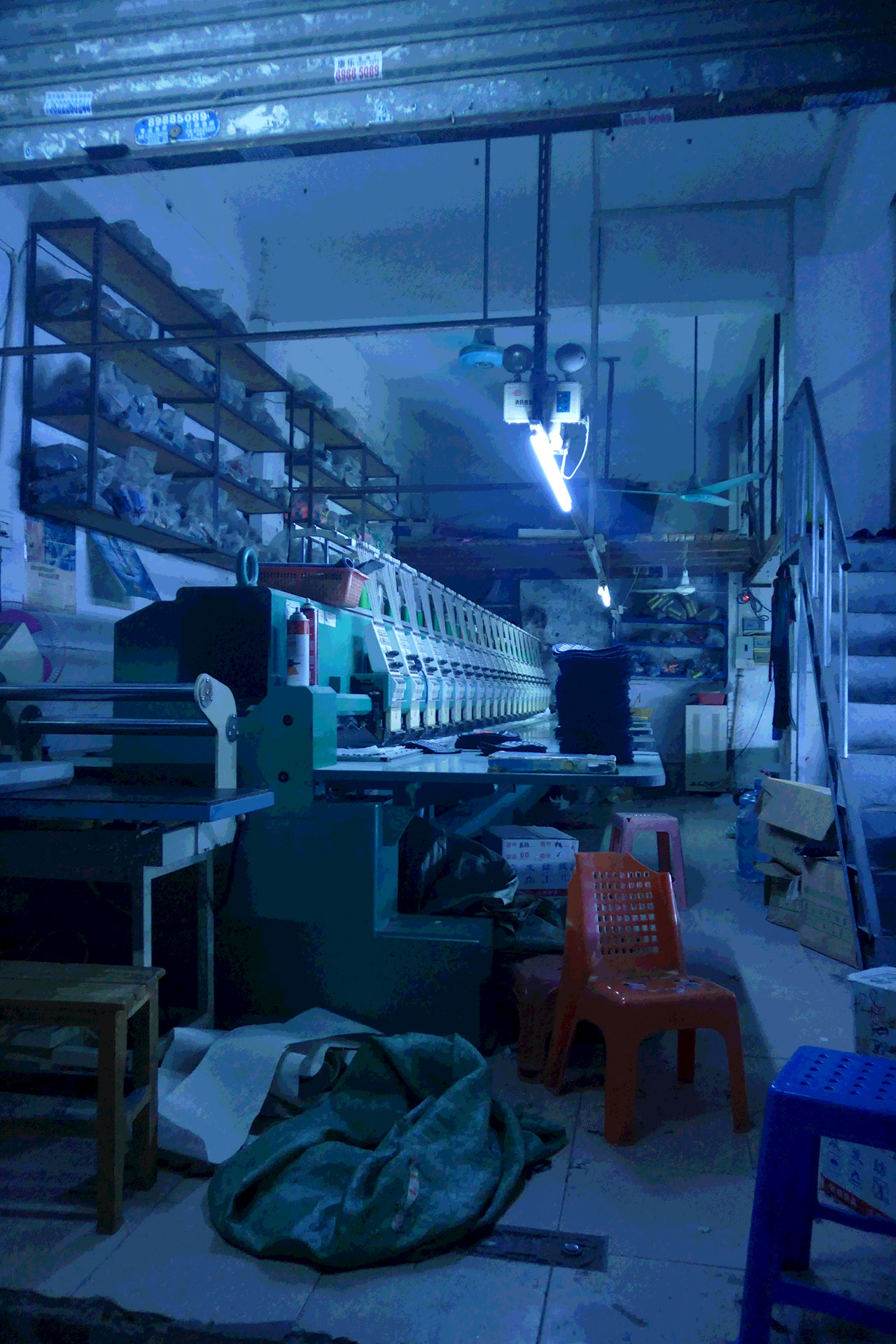

As I progressed, I realised the slum was like an onion of layers and I had penetrated the commercial ring where garments were being made. The area I passed into contained a large network of food stalls and meat markets; a place where the slum residents, tradespeople from the workshops and neighbouring shoppers came for affordable meals and foodstuffs. Power appeared to come from both generators and was siphoned from overhead power lines, with no public infrastructure or lights of any kind. Each seller responsible for illuminating and warming their own trade.

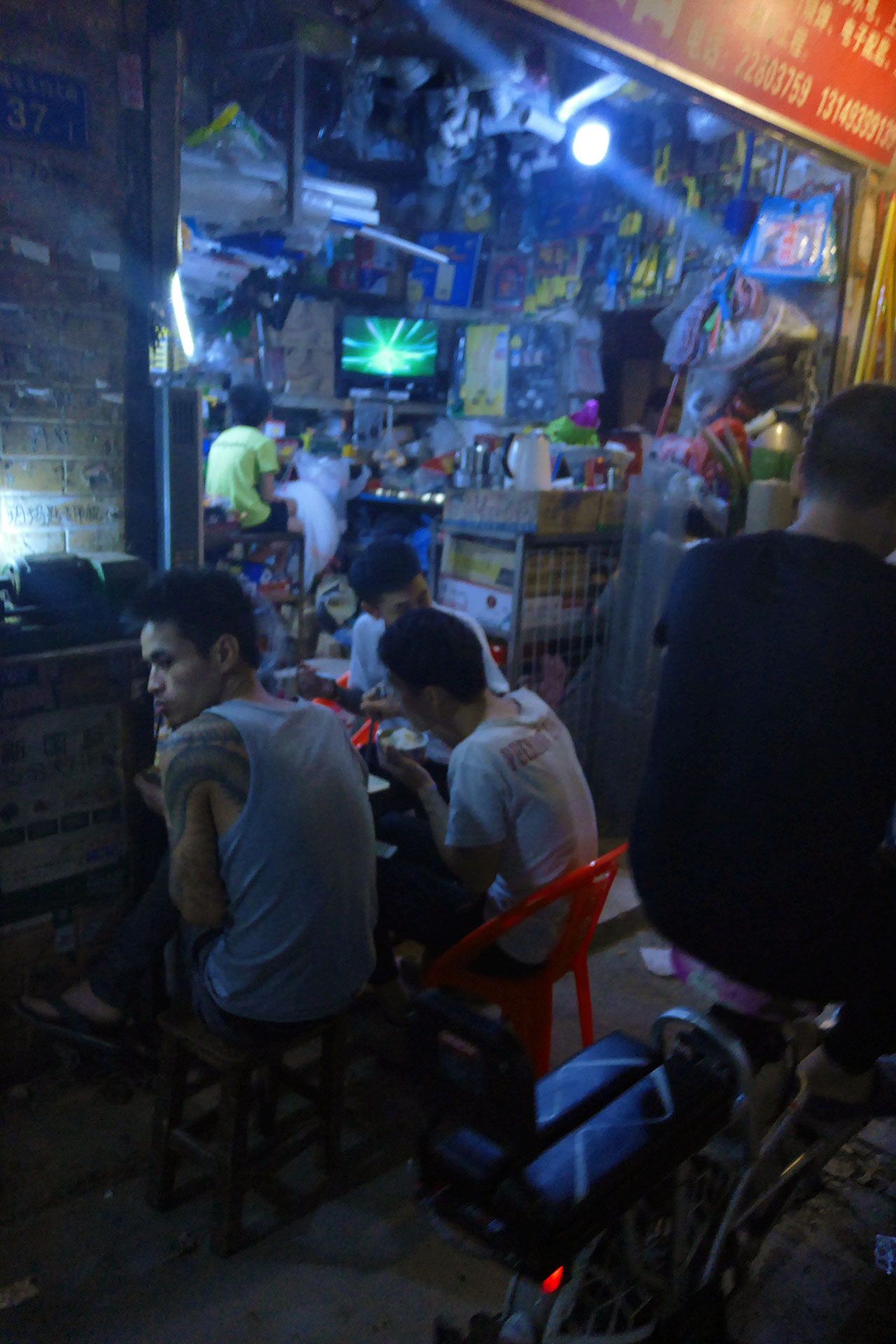

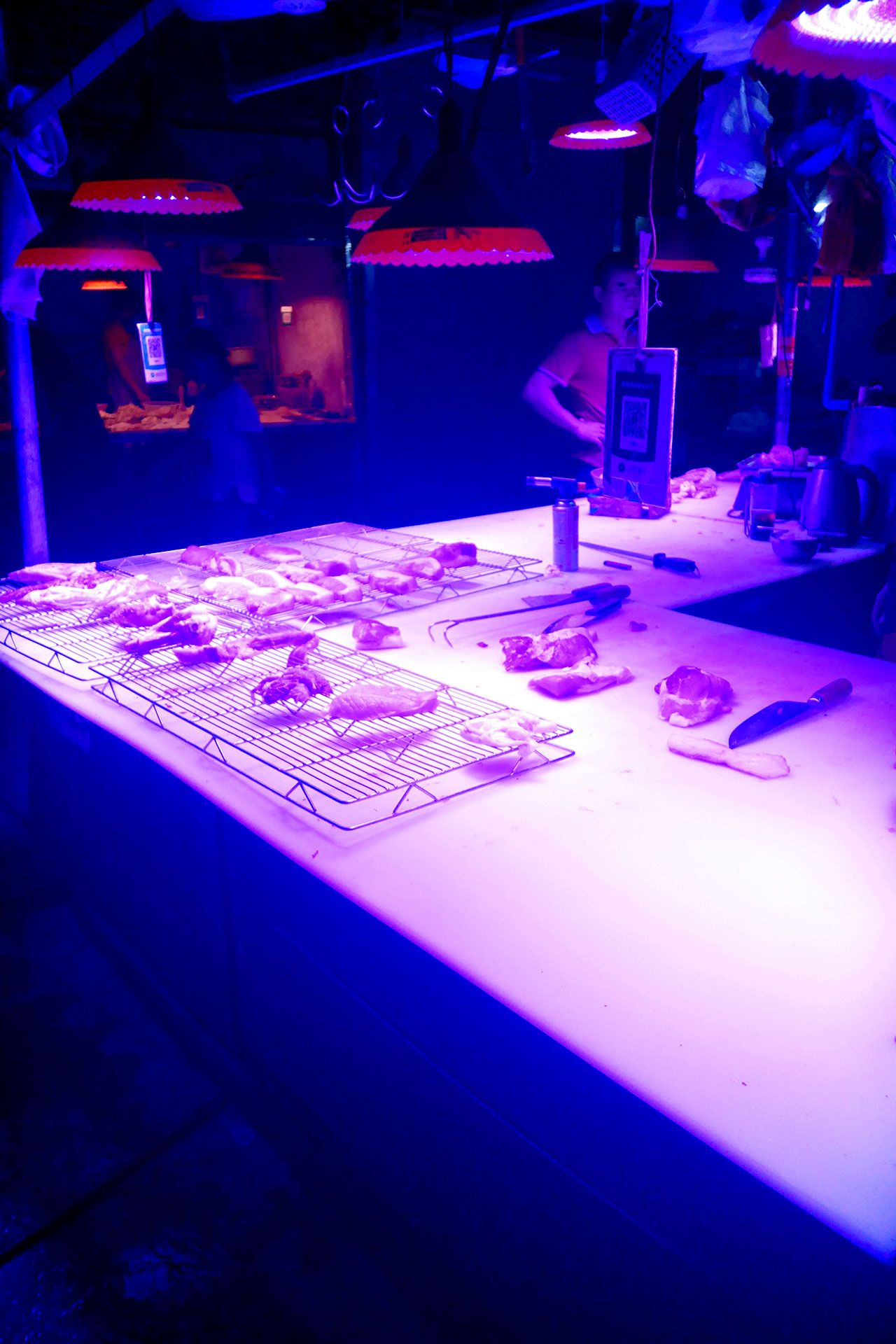
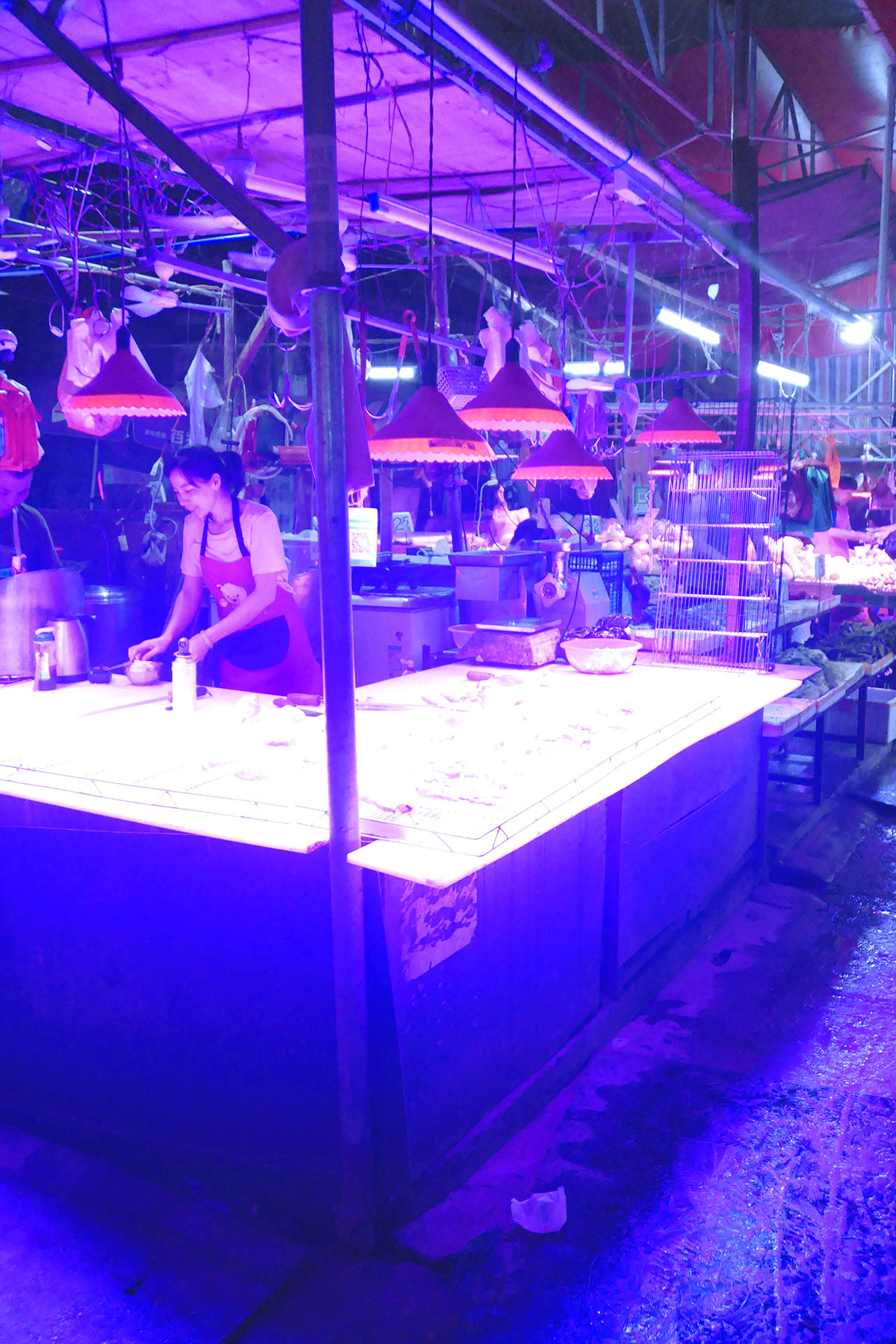
Beyond the central food market sector, the condition of the roads, stores and residential tenements began to deteriorate even further. With less traffic and assuredly less business many of the shopfronts were derelict and untenanted. Without custodians, there was little attempt or resources for keeping the pathways safe or even practical. I had to tread very carefully with many areas requiring pedestrians to walk almost single file because of the lack of tractable path. Some areas were flooded with no means of irrigation and in others the road itself had simply fell apart leaving dirt and stone all across road.
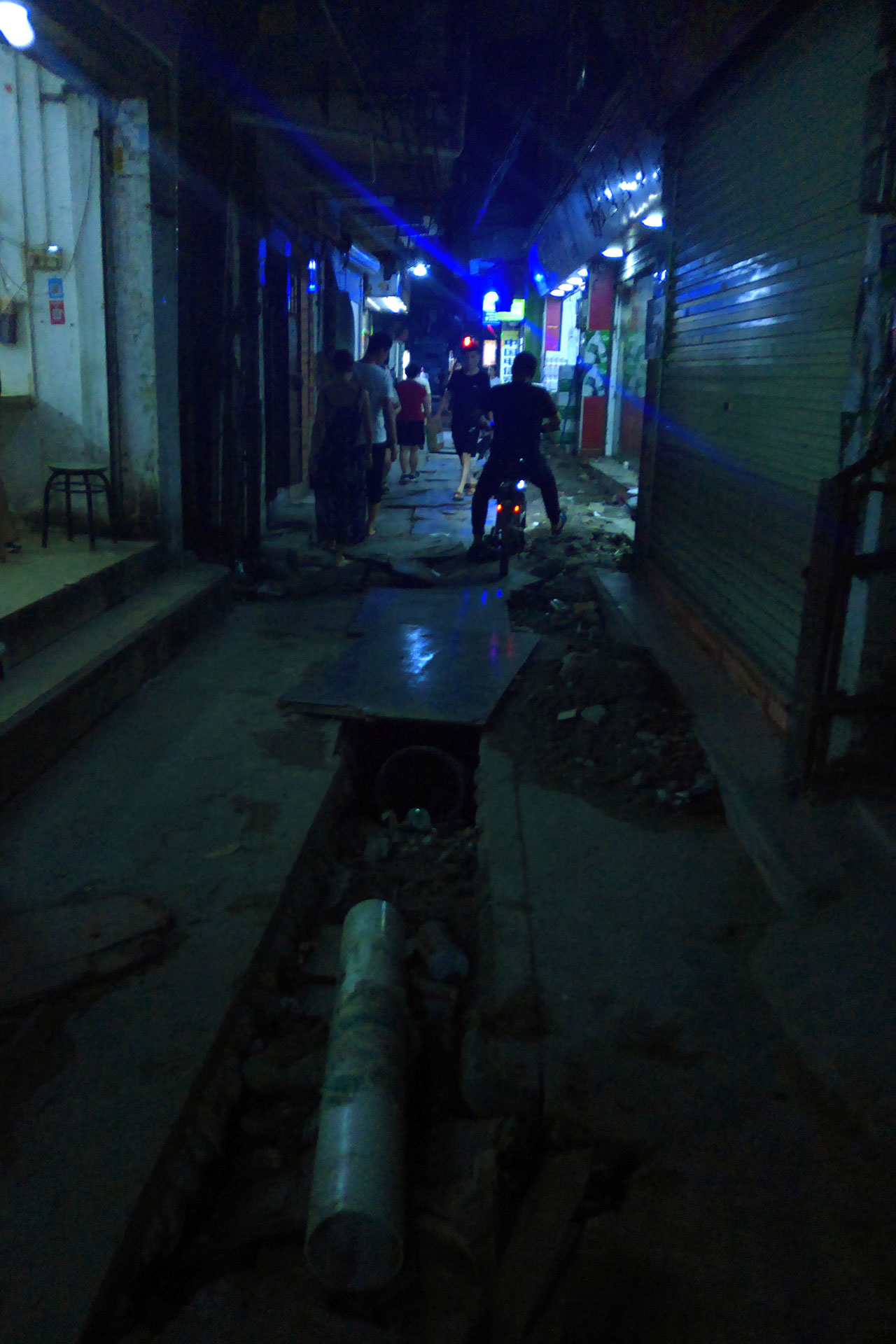

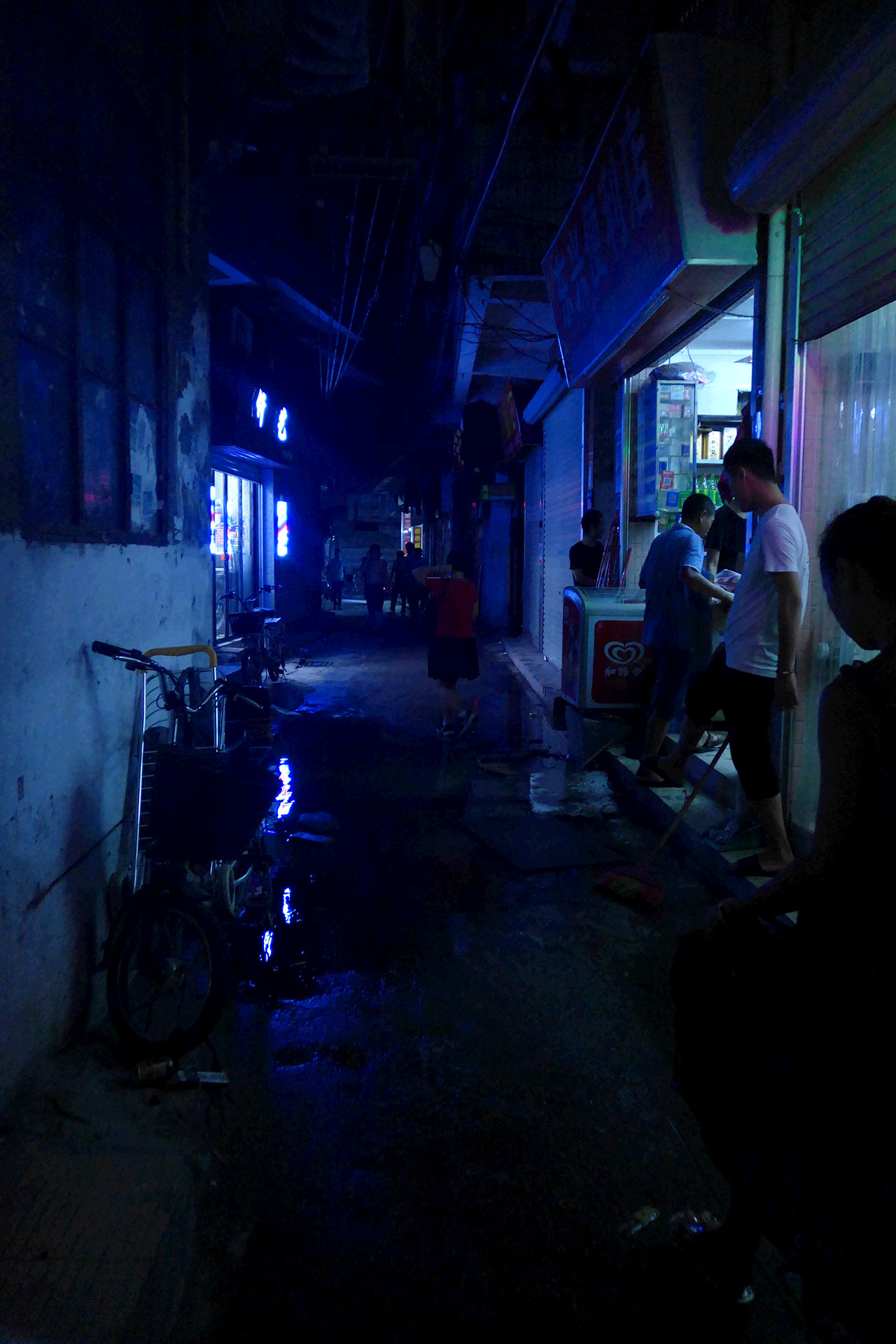
A final sector followed the semi-abandoned shopfronts which was a mostly dark network of alleys with doors and leads to premises of indeterminate purpose.

Eventually even the dim lights bleeding into the alleys from shops and residences died out. Pedestrian traffic had bled to a trickle. In almost pitch blackness the phone served as a flashlight to navigate for more than ten minutes until the alley eventually opened into a public street. As China and Guangzhou continues to rapidly develop, slums like this will most likely be demolished; their unregulated but seemingly thriving commerce and life relocated if not simply nullified in the interests of safety, quality of life and modernisation.
Equipment Used
If you enjoyed this article, supporting SHELLZINE by any amount can be made via the link below. Your contribution is completely optional and all funds help cover the website’s growing hosting costs and enable further original content creation without the use of advertisements. Secure payments by all major card types, including Google Pay and Apple Pay, are supported.





